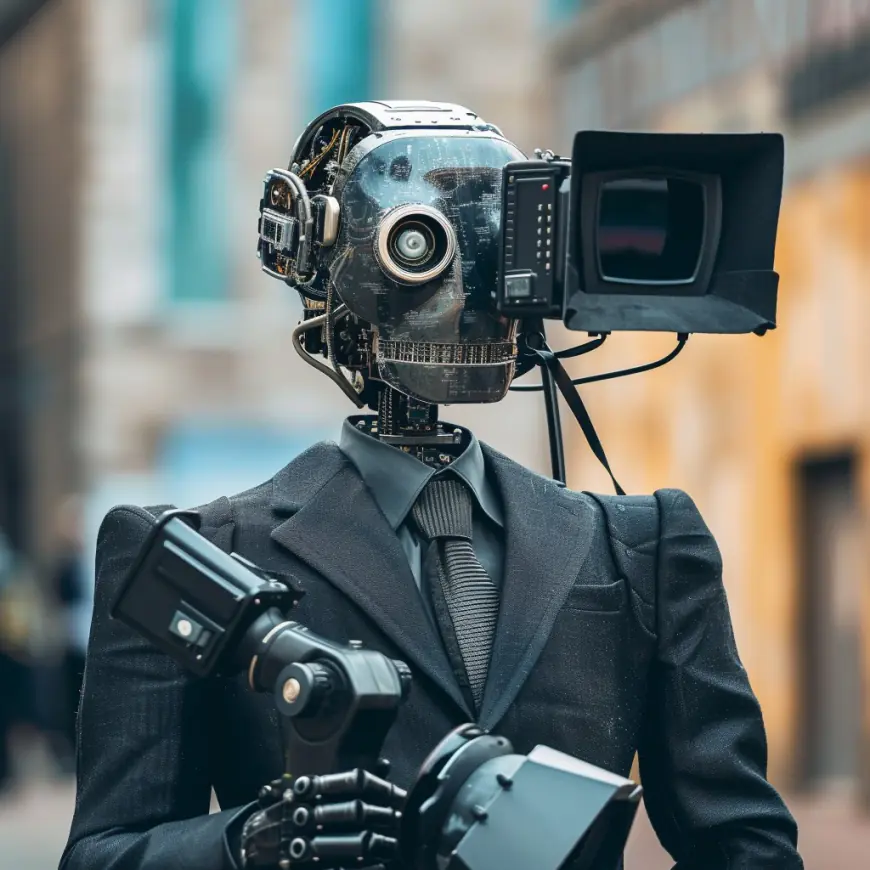The Rise of AI-Generated News Anchors: Will They Disrupt Traditional Parasocial Relationships?
Channel 1, a Los Angeles-based start-up, is making waves in the media industry by developing AI-generated news anchors. While the concept promises to revolutionize news delivery and content personalization, it raises questions about the impact on decades-old parasocial relationships between television audiences and human anchors. AI-powered news anchors on the horizon Channel 1, founded by […]

Channel 1, a Los Angeles-based start-up, is making waves in the media industry by developing AI-generated news anchors. While the concept promises to revolutionize news delivery and content personalization, it raises questions about the impact on decades-old parasocial relationships between television audiences and human anchors.
AI-powered news anchors on the horizon
Channel 1, founded by entrepreneurs Adam Mosam and Scott Zabielski, is pioneering using artificial intelligence (AI) to create lifelike news anchors. These AI-generated news presenters have already appeared in various parts of the world, with Kuwait, Greece, South Korea, India, and Taiwan experimenting with similar technologies.
The key objective behind these AI-driven news anchors is to enhance the user experience by tailoring content to individual preferences and automating certain aspects of news presentation. Additionally, AI can facilitate language translation and reduce human intervention in news production.
Declining trust in human news anchors
Recent surveys, such as one conducted by Ipsos, reveal a decline in trust among viewers towards human news anchors. Only 42% of respondents in the UK expressed trust in TV newsreaders, marking a significant 16-point drop in just one year.
This decline in trust has led many individuals to seek news from alternative sources, including individual content creators and influencers on social media platforms.
Parasocial relationships, a term coined in the 1950s, describe viewers’ emotional connection with on-screen personalities. Traditionally applied to news anchors, this phenomenon has expanded to include social media influencers and content creators who engage directly with their audiences.
These figures become more than just sources of information; they are perceived as friends entering the viewers’ homes regularly.
The big question is whether AI-generated news anchors can replicate the personal connections established by human anchors. While Adam Mosam acknowledges that AI cannot replace the emotional connection between humans, he argues that the primary goal is not to compete with humans but to enhance news delivery.
He stated, “We’re not doing this because we think a robot does a better job than a human – that’s ridiculous.”
Historically, news programs have sometimes used actors to deliver news content, and viewers generally accepted this practice. However, Nic Newman from the Reuters Institute for the Study of Journalism at the University of Oxford believes that maintaining humanity in news delivery remains crucial.
Newman believes that AI-generated anchors may succeed in delivering short news bulletins but may struggle to establish parasocial relationships with viewers.
Challenges and limitations of AI-generated news
While AI can assist in news presentation, inherent limitations and challenges exist. For instance, AI may struggle to identify and report on newsworthy events independently. The Channel 1 test episode relied heavily on stories discovered and filmed by human journalists, highlighting the importance of human input in news gathering.
Adam Mosam acknowledges this limitation and believes that certain aspects of reporting, such as interviews and personal interactions, cannot be effectively replaced by AI. However, he envisions AI playing a role in tasks like drone-based analysis.
Furthermore, AI-generated content must undergo rigorous verification and fact-checking processes to prevent issues like content hallucination. The reliability of AI-generated news hinges on the careful curation and supervision of content by human experts.
The role of human oversight
Currently, Channel 1 employs nearly a dozen staff members to oversee the AI-generated scripts and story selection. A meticulous 13-step process is in place to ensure that AI-generated content meets journalistic standards. Additionally, the company seeks to hire an editor-in-chief to provide further editorial oversight.
The critical question remains whether removing humans from the news production process is feasible. According to experts like Nic Newman, maintaining human involvement in delivering news programs will likely remain essential. AI would lack the necessary raw material to generate news effectively without human sources.
The future of AI-generated news anchors
The media landscape is evolving as AI-generated news anchors continue to gain prominence. While these technologies offer exciting possibilities for personalized news delivery, they also challenge the traditional concept of parasocial relationships with human anchors.
The success of AI-generated news will depend on its ability to complement human involvement and maintain the quality and integrity of news content.
The balance between AI and human input in news production will likely be an ongoing discussion in the media industry. Whether viewers fully embrace AI-generated news anchors and the evolution of parasocial relationships remains uncertain. Still, one thing is clear: the intersection of technology and journalism is reshaping the way we consume news.
What's Your Reaction?







































































































